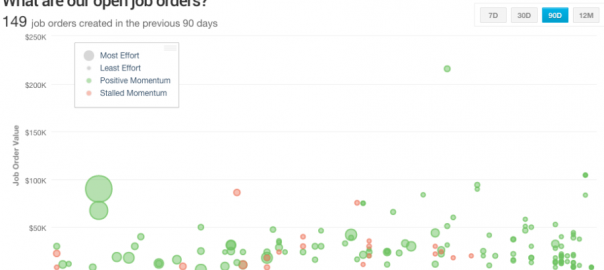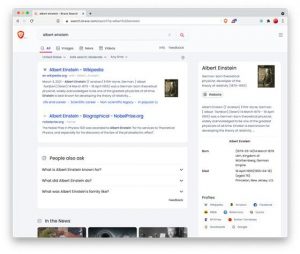If no one has convinced you that data driven recruiting is the most direct path to improve recruiting performance, take a minute to read through a few of these articles.
Even if you haven’t totally bought in to the concept of data-driven recruiting, you should at least be able to agree on one thing — recruiting is a numbers driven profession, and it helps to know what numbers really matter to your performance. That’s why recruiting dashboards are so important.
Most firms struggle with the idea of “Big Data” because they don’t do a good job of boiling their data down to the few key pieces of information that really matter. That’s the job a recruiting analytics dashboard does for you. It cuts out the excess information and keeps you focused on the data points that make your job easier.
For managers and executives, those data points are the bottom line — how much business did we book? How much more can we expect to book? How much headcount do we need to maintain our growth? Their responsibility is to ensure the business doesn’t run short of cash, so that’s what they pay attention to from day-to-day.
But what about the frontline recruiters? What are the key pieces of information you can use to organize your time, and recruit more effectively, day in and day out?
Open Job Orders

Recruiters have to organize their days based on the status of their open job orders, so the first thing you should look at every morning is the status of your job order pipeline. Prioritize the job orders that haven’t seen activity for a while, and keep stay on top of job orders that are at risk of stalling.
Job Order Pipeline

To maintain a steady performance, it’s also important to go a step further and look at your job order pipeline more holistically as well. If you keep an eye on the number of job orders you have in each stage of your recruiting process, you can balance your time between filling the front end as job orders get filled or get closed out, and closing job orders further down the funnel.
Candidate Status

Since job orders are only one half of the recruiting funnel, you also have to prioritize the time you spend sourcing and preparing candidates. That means maintaining a daily view of the status of your candidate pipeline. This way, you can keep a close eye on how well individual candidates progress with your clients, and be proactive about finding and qualifying new ones when needed.
Team Activity

The final piece of information that goes into optimizing recruiting performance is team activity. The best way to stay on track towards your own goals is to keep pace with your teammates. By observing how your colleagues handle their work on a daily basis, you can pick out the habits that are consistent among the top performers and adopt them to improve your own approach.
The “big” in big data only refers to the amount of data you collect — not the amount you use on a daily basis. The recruiters who will be the most successful in the future are the ones who know the difference, and boil down all the information they collect to 3-4 actionable points that help them recruit more efficiently and achieve better results.

(240)
Report Post







